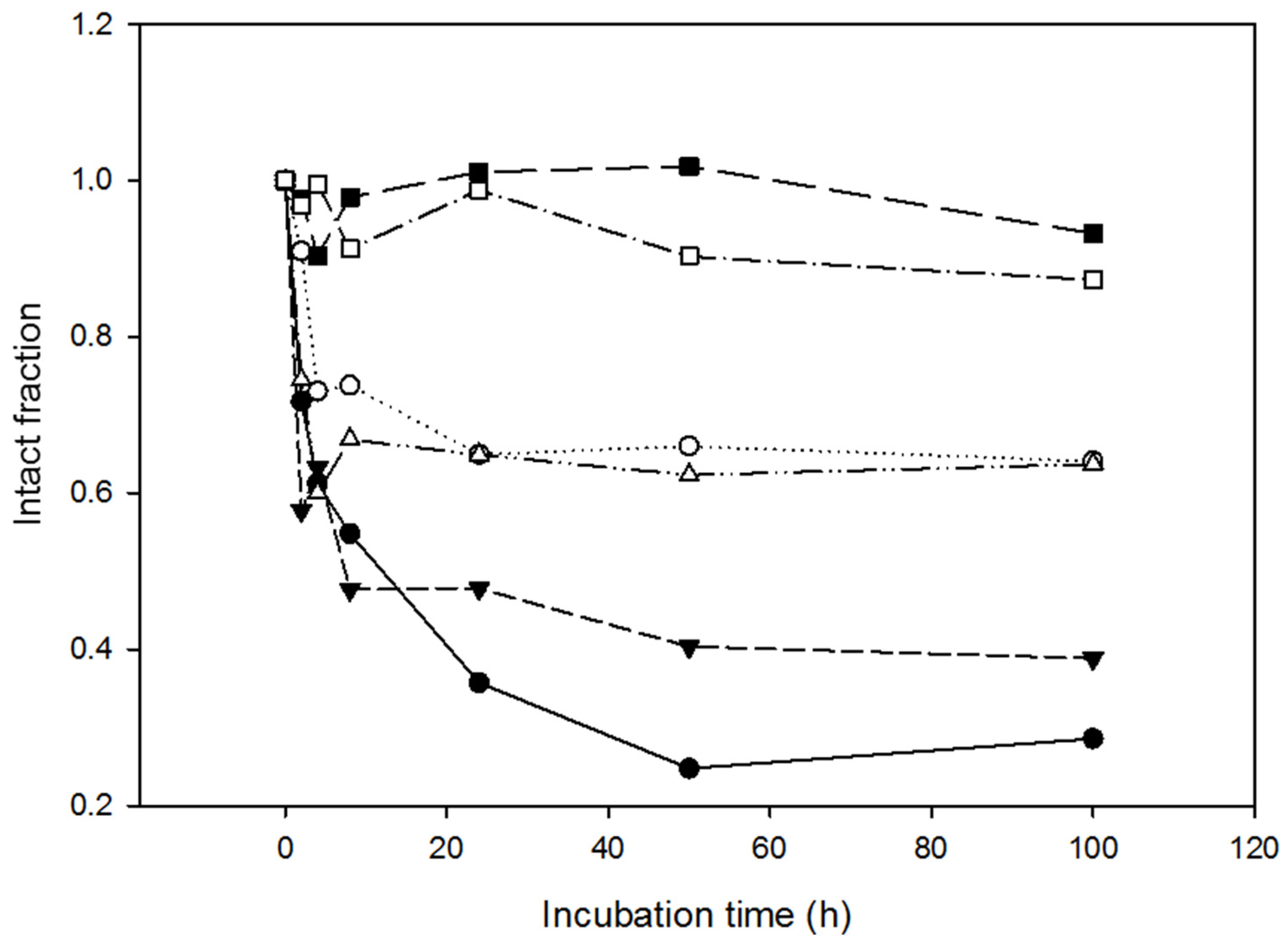Stranded rna 1 room temperature.
Rnase a stability room temperature.
Inactivation of dnase activity.
Rnase a can be dissolved at a concentration of 1 to 10 mg ml in 10 mm tris hcl ph 7 5 15 mm nacl heated to 100 c for 15 minutes to inactivate contaminating dnases and cooled slowly to room temperature and dispense into aliquots.
For illustration the qpcr performance of a product that was stored at 20 c was compared to the same product stored at room temperature for 4 weeks.
Rnase a is a very stable enzyme and solutions have been reported to withstand temperatures up to 100 c.
Rnases in general are rich in disulfide bounds which grant them extra stability in adverse conditions such as heat.
Both the excitation and emission slit widths were fixed at 5 nm.
Nuclease stability of rna synthesized with the rt pcr competitor construction kit.
In contrast to rnase b it is not a glycoprotein 2 rnase a can be inhibited by alkylation of his12 4 or his119 which are present in the active site of the enzyme 3 activators of rnase a include potassium and sodium salts.
Rnase a is a single chain polypeptide containing 4 disulfide bridges.
Storage at room temperature does not affect enzyme performance all our products have been tested for stability at room temperature for an extended time.
The rnase a samples were prepared from stock solution by dissolving 1 mg of the enzyme into 1 ml of citrate buffer ph 5 0.
Storage stability this product remains active for at least 2 years when stored properly at 20 c.
Total rna stability at room temperature 25 c.
2 suggests to dissolve 10 mg ml rnase a in 0 01 m sodium acetate ph 5 2 to heat to 100 c for 15 minutes in a water bath and to cool down to room temperature very slowly.
However 20ºc long term storage is recommended for both l yophilized and pre mixed solutions of rnase a.
How can i improve rna quality with low 260 230 ratio.
That s why some rna extraction protocols include 2 mercaptoethanol in its.
At 100 c an rnase a solution is most stable between ph 2 0 and 4 5 13 for removal of rna from preparations of plasmid dna.
The ph value is equilibrated by adding 0 1 fold the volume of 1 m tris cl ph 7 4.
The fluorescence experiments were done at room temperature 23 c with a shimadzu rf 5000 spectrofluorimeter.

